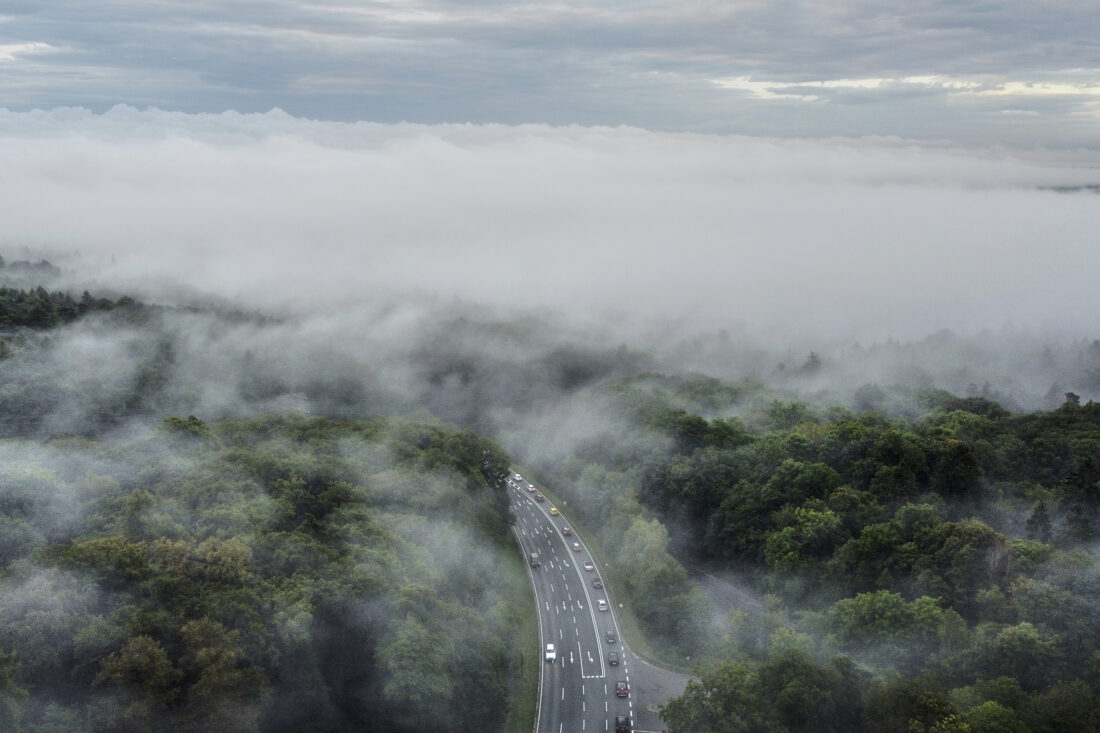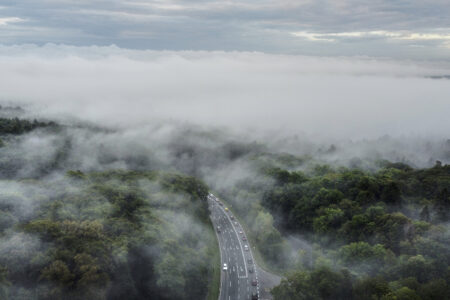Reflections in Nature: Fog is nothing more than many tiny water droplets

MICHAEL PROBST/Associated Press Fog covers a forest near Germany.
While driving down the road one day, Mary Alice commented on the clouds appearing as if they were big fluffy pillows. She then asked if you could touch a cloud and what it would feel like.
I answered yes, you can. Fog is nothing more than a thick cloud of tiny water droplets suspended in the atmosphere at or near the earth’s surface. Fog obscures or restricts our visibility.
Being inside a cloud would be like walking in dense fog. The sensation you would feel would be wetness and coolness, as it contacts the skin. It would feel like a gentle mist, providing a damp feeling to the air.
If you ever walked on a foggy day and felt the misty fog, you have touched a cloud.
We are coming to the time of year when driving in northern Pennsylvania can be a challenge. One moment the driver is above the fog, and then when dropping into a valley, the fog is so thick one can hardly see the road. This fog is known as ground fog.
During the fall, ground fog, which is especially common in the valleys, is burnt away by the rays of the morning sun.
Fog is nothing more than tiny droplets of water or crystal ice that forms a few feet to several hundred feet above the ground. This occurs because the air temperature above the ground is cool enough to form dew. When this occurs, tiny droplets of water or crystal ice fill the air. We call this frost.
Each tiny droplet is about 0.001 inches in diameter and centers around a particle of dust. These droplets are heavier than air but are so small the slightest air movement keeps them suspended.
We always have varying amounts of water vapor in our atmosphere, which is invisible to us most of the time. It appears as a liquid in the form of dew, fog or clouds, and sometimes appears in the solid form of frost, snow, sleet or hail.
No matter how it appears, the process is always the same. For water to condense, the air must be cooled below its dew point.
The dew point occurs when the water vapor changes from invisible water vapor to visible water or ice, which is called condensation. The temperature at which saturation occurs is called the dew point. Whenever defining the dew point, the word temperature must always be included.
The form that the water vapor takes depends on which cooling occurs that drops the air below its dew point. There are four important processes which bring water vapor to its dew point: loss of heat by radiation, which occurs on nights when there is no cloud cover and the earth’s heat escapes into the atmosphere; contact with cooler surfaces, such as snow or the cold ground and mixing with colder air by expansion in rising air currents.
When dry air rises it cools. For every 1,000 feet that dry air rises, it cools 5.5 degrees Fahrenheit. Moist air cools at a different rate.
When air is cooled below its dew point by contacting a cold surface, the water vapor condenses directly on that surface. If the temperature is above32 degrees, dew is formed on the colder surface. When dew forms on a surface, it means that the air has reached its dew point only when touching that surface.
The clearer the night, the greater the cooling by radiation and the heavier the dew will be.
If the temperature is below 32., feathery white crystals, which are known as frost, will form. Although the water vapor goes directly into the solid form, frost is not frozen dew. However, there is a frozen dew.
This occurs when dew forms before the temperature drops below 32 with the temperature continuing to drop. At this point, the drops of dew will freeze into clear ice pellets.
When the temperature near the ground drops below 28 the liquid in plant cells will freeze, the walls of the cells will burst and kill the plant. This is known as a killing frost.
Cloudy skies act as a blanket of insulation and prevent loss of heat by radiation. Winds will stir the air and keep it from being in contact with cold surfaces for any length of time. Therefore, dew and frost are less likely to form on cloudy or windy nights.
Fruit growers who fear frost in early spring or late fall will build fires, put out smudge pots or large fans to keep frost from forming.
The U.S. Air Force burns away fog at its airfields.
Sometimes, warm moist air will blow over snow-covered cold ground, and when this occurs, we have a winter fog. This is called fog advection and can cover large areas and travel hundreds of miles.
We are at the time of year when all these elements will be common occurrences. Perhaps you will have your own little battles with frosted windshields, slippery roads or poor visibility.
However, the inconvenience will surely be lessened if you take the time to look at the beauty of nature’s elements. After all, frost, fog, snow, hail, sleet and rain all play an important role in nature.
Bill Bower is a retired Pennsylvania Game Commission Wildlife Officer. Read his blog and listen to his podcasts on the outdoors at www.onemaningreen.com.


